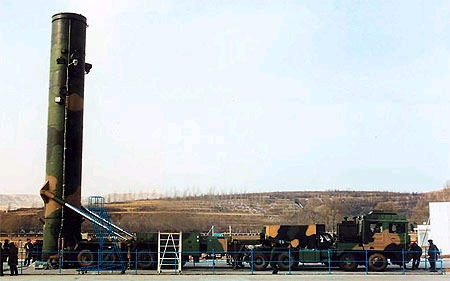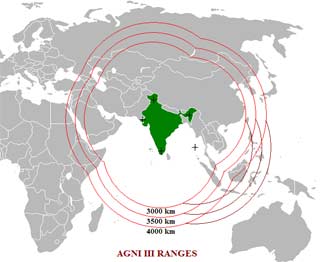|
Beijing: In a bid to deflect attention from the increasing curiosity it's extremely ambitious military programme has been causing amongst nations the Chinese media has exhibited sudden interest in India's under-development, inter-continental, nuclear-capable missile-the Agni-V. A brief report in the People's Daily on the Agni-V emerges even as media coverage around the world focuses on the capabilities of the Chinese inter-continental missile, the Dong Feng-31A (East Wind), which made its appearance during China's National Day Military Parade on 1 October. The startling reference to the Agni-V (Fire) may have to be seen in this context for China has come under extreme pressure from military powers around the world to be more transparent about its military expenditure and the development of its military power. Even as it seeks to cast its lot with developing nations in world economic forums, China fails to provide adequate explanations where it finds the vast sums of money it dedicates to the development of military hardware which surpass the needs of any conventional military power.  | | Dong Feng 31A | What may have surprised Indian observers even more is that any discussion or reference to India in mainstream Chinese media is invariably in reference to developments pertaining to the northeastern Indian state of Arunachal Pradesh.So the reference to Agni-V is not only out of the blue, but also without any relevant context. This is the report from People's Daily in its entirety:
''India's Advanced Systems Laboratory (ASL) has made its forthcoming Agni-5 missile highly road-mobile, or easily transportable by road, which would bring Harbin, China's northernmost city within striking range if the Agni-5 is moved to northeast India. ''The Agni-5 is similar to the Dong Feng-31A presented in China's National Day Military Parade in Beijing . India is going to test-fire the missile in early 2011. ''The ASL, which develops India's long-range, nuclear-tipped missiles, enables the Agni-5 to reach targets far beyond its stated 5,000-km range by quickly moving closer to the target. Therefore, from various places across India, the Agni-5 can reach every continent except North and South America.'' DF-31A and the Agni-V  China has developed an improved variant of the DF-31 called the DF-31A, which has a reported range of 11,200 plus kilometres. It has some MIRV capability which may allow it to deploy three warheads, each capable of a 20-150 KT yield. It will also deploy decoys that can complicate missile defence systems. China has developed an improved variant of the DF-31 called the DF-31A, which has a reported range of 11,200 plus kilometres. It has some MIRV capability which may allow it to deploy three warheads, each capable of a 20-150 KT yield. It will also deploy decoys that can complicate missile defence systems.
In 2009 US Air Force Intelligence reported that under 15 DF-31A missiles had been deployed. From reports, the Agni-V would appear to be an upgraded version of the Agni-III, which has been successfully tested. The missile is expected to have a range of about 5000-6000 km and is expected to undergo its first flight test sometime in late 2010, or early 2011. The Agni-V would be able to target most of the northern cities of China, including Harbin, The Agni-V is a three stage solid fueled missile with composite motor casing in the third stage. Two stages of this missile are constructed of composite material which will help in reducing weight and increasing range. The Agni-V will be India's first missile to carry multiple warheads (MIRV) which will also deploy countermeasures against anti-ballistic missile systems. The Agni-V will be a canisterised, road-mobile missile, and in this it will be similar to the Dong Feng-31A. In this it will also differ from its parent, the Agni-III, which is non-canisterised and can only be moved from place to place with some difficulty. Made of maraging steel, a canister provides a hermetically-sealed atmosphere that preserves the missile for years. The Agni-V will carry 3-10 MIRV's or separate nuclear warheads.
|